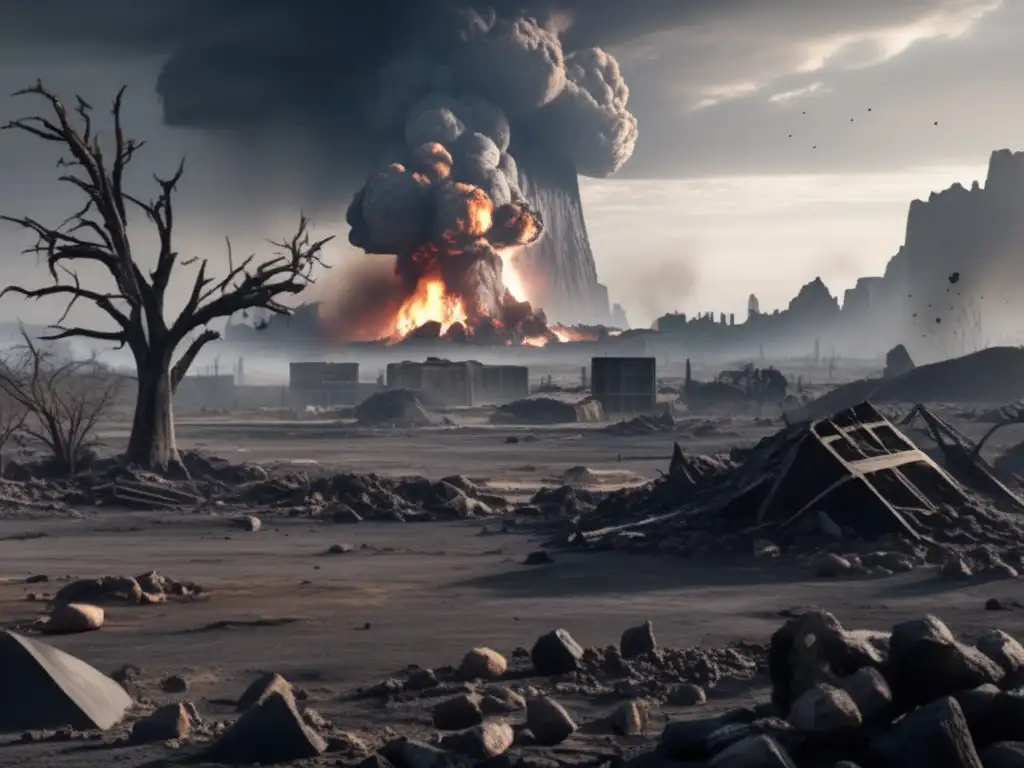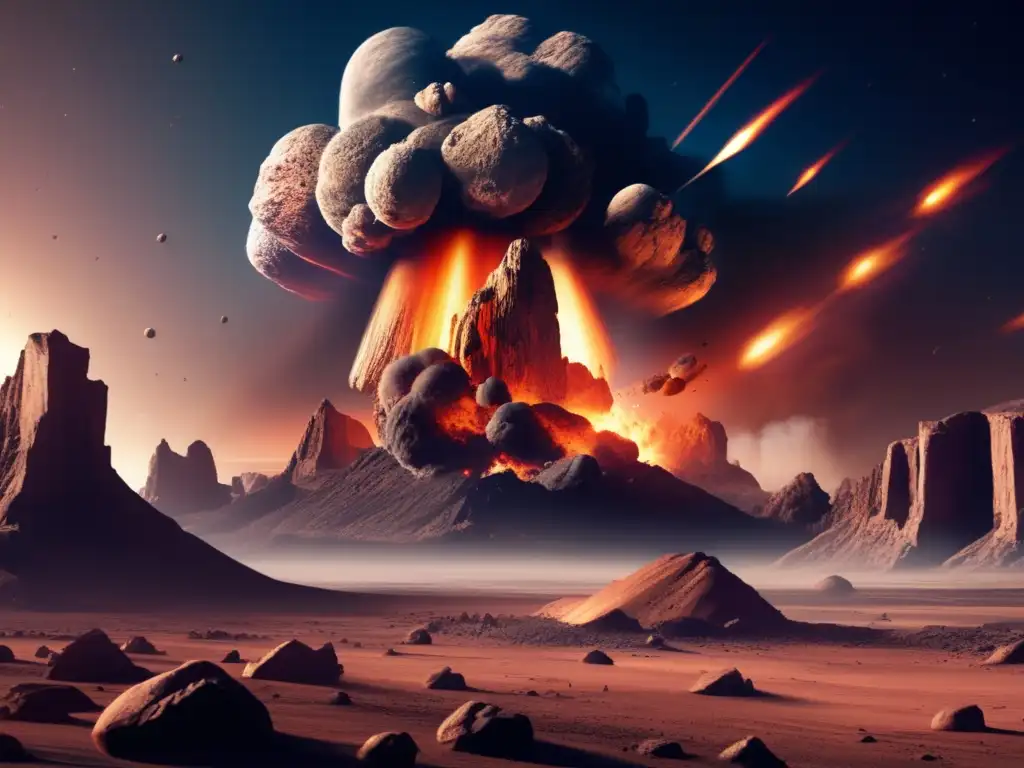From Impact To Aftermath: The Lifecycle Of An Asteroid Strike

Introduction
Asteroid impacts have fascinated people for centuries. Their power and unpredictability have been the source of many myths and legends throughout history. Despite this, we know very little about the lifecycle of an asteroid strike, from the initial impact to the long-term aftermath. In this article, we will dive deep into the different stages that follow an asteroid impact and explore the various effects it can have on the impacted area.
The Initial Impact

What Happens During an Asteroid Impact?
When an asteroid collides with Earth, an incredible amount of energy is released in the form of heat, light, and shock waves. The exact nature of the impact depends on various factors, including the size and speed of the asteroid, the angle of impact, and the composition of the ground it strikes.
The Crater Formation Process
One of the most noticeable effects of an asteroid impact is the formation of a crater. The size and shape of the crater are determined by the asteroid's size and speed, as well as the composition of the soil. The impact creates a shockwave that travels through the ground, liquefying the soil and causing it to splash upward and outward. The resulting hole in the ground is typically wider than it is deep, with a raised rim surrounding it.
Why Do Asteroid Impacts Matter?
Asteroid impacts can have significant consequences for our planet. They have been responsible for mass extinctions in the past, and could potentially cause catastrophic damage if they were to strike a heavily populated area. Understanding the impact process is crucial for predicting and preparing for future strikes.
The Immediate Aftermath

What Happens Immediately After an Asteroid Impact?
The immediate aftermath of an asteroid impact can be chaotic. The shockwave from the impact can cause earthquakes and tsunamis, while the heat and light generated by the impact can start fires and ignite explosions. The impact can also kick up a cloud of dust and debris that can blanket the surrounding area, blocking out sunlight and making it difficult to breathe.
Local Effects of an Asteroid Impact
The local effects of an asteroid impact depend on a variety of factors, including the size of the asteroid and the composition of the impacted area. In general, however, an impact can cause widespread destruction within a few miles of the impact site. Buildings and infrastructure are destroyed, and vegetation and wildlife are wiped out.
Global Effects of an Asteroid Impact
The global effects of an asteroid impact can be equally devastating. The dust and debris kicked up by the impact can block out sunlight for years, causing widespread cooling and crop failures. This cooling effect could eventually lead to mass extinctions, as many species are unable to adapt to the changing climate.
The Long-Term Aftermath

What Happens in the Weeks and Months Following an Asteroid Impact?
In the weeks and months following an asteroid impact, the area around the crater begins to recover. Plants and animals that survived the initial impact begin to repopulate the area, taking advantage of the newly available resources. As the dust settles, the climate begins to stabilize, although it may take years or even decades for things to return to normal.
The Geological Impact of an Asteroid Strike
The geological impact of an asteroid strike can last for millions of years. The creation of a large crater can alter the landscape, creating new valleys and mountain ranges. The impact can also cause changes in the local geology, creating new mineral deposits and altering existing ones.
The Cultural Impact of an Asteroid Strike
The cultural impact of an asteroid strike can also be significant. Many cultures throughout history have incorporated the idea of catastrophic impacts into their mythology and folklore. The realization that such events are not just the stuff of legend can change the way we view our place in the universe and our relationship with the natural world.
Frequently Asked Questions

-
Can we predict asteroid impacts?
Yes, we can. Scientists from all over the world work together to track asteroids and predict their trajectories. However, predicting an impact with enough time to prepare is still a difficult task.
-
Are all asteroid impacts equal?
No, they are not. Asteroid impacts can vary greatly in size and power. A small asteroid impact might not cause much damage, while a large one could be catastrophic.
-
What can we do to prepare for an asteroid impact?
There are several things we can do to prepare for an asteroid impact, including developing early warning systems, building shelters, and stockpiling supplies.
-
Has an asteroid impact ever caused a mass extinction?
Yes, it has. The most famous example is the extinction of the dinosaurs 65 million years ago, which many scientists believe was caused by an asteroid impact.
-
Can we do anything to prevent an asteroid impact?
Yes, we can. One option is to deflect the asteroid away from Earth using a spacecraft. Another option is to destroy the asteroid before it reaches Earth using a nuclear weapon or other explosive device.
Conclusion
Asteroid impacts are a fascinating and potentially deadly phenomenon. Understanding the lifecycle of an asteroid strike can help us prepare for future impacts and mitigate their effects. From the initial impact to the long-term aftermath, every stage of the process has its own unique challenges and opportunities. By studying these stages, we can stay one step ahead of the asteroids and protect ourselves and our planet from their destructive power.
Thank you for reading! We hope you've learned something new about asteroids and their impact on our planet. If you have any questions or comments, please feel free to share them in the comments section below.
Additional Resources

For more information about asteroids and their impact on our planet, check out these resources:
- NASA Planetary Defense
- American Museum of Natural History - What happens when an asteroid hits Earth?
- Asteroid Day
 Scars On Our Planet: Unveiling Impact Craters
Scars On Our Planet: Unveiling Impact Craters The Vredefort Dome: A Glimpse Into An Ancient Catastrophe
The Vredefort Dome: A Glimpse Into An Ancient Catastrophe Into Thin Air: The Disappearance Of Asteroids Post-Impact
Into Thin Air: The Disappearance Of Asteroids Post-ImpactIf you want to discover more articles similar to From Impact To Aftermath: The Lifecycle Of An Asteroid Strike, you can visit the Asteroid Impacts category.
Leave a Reply

Articulos relacionados: